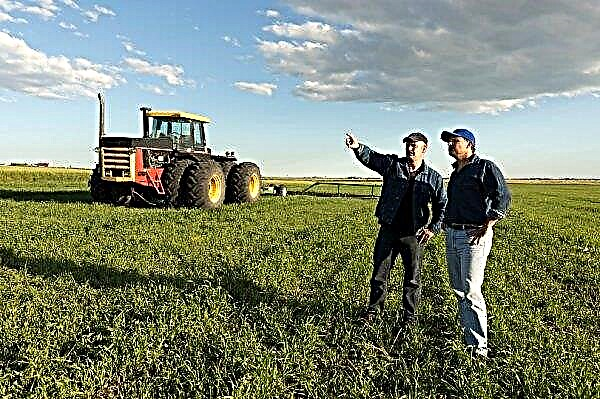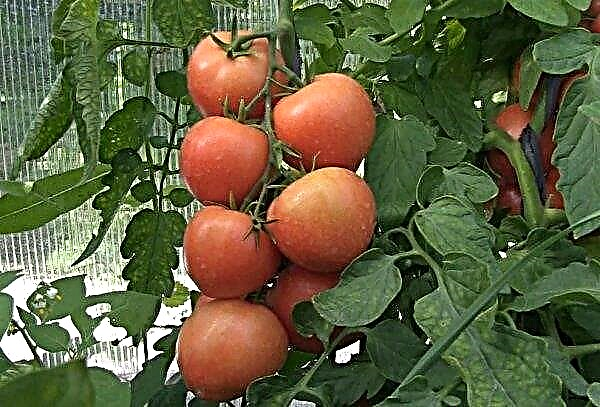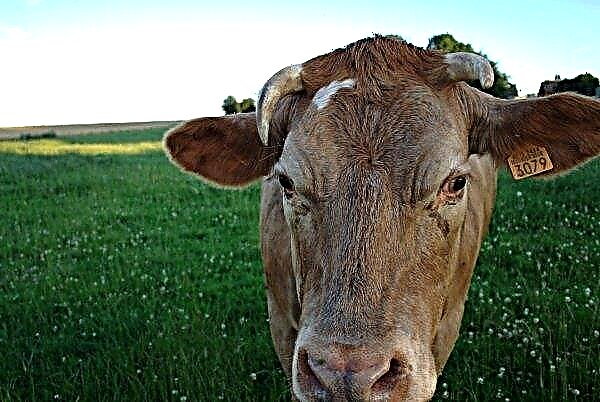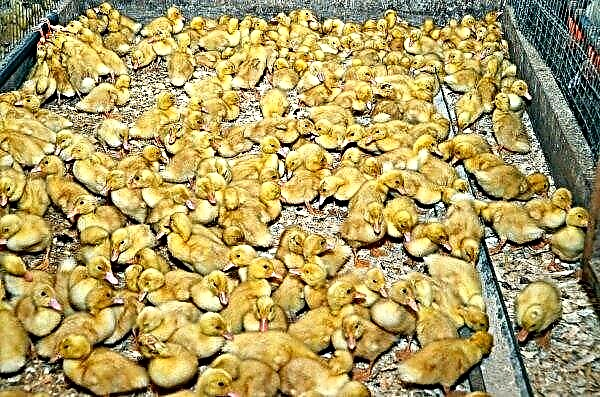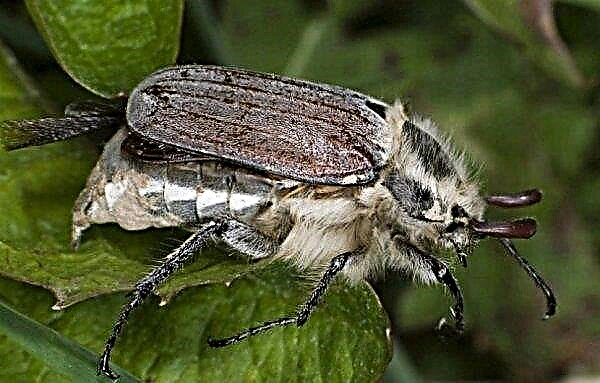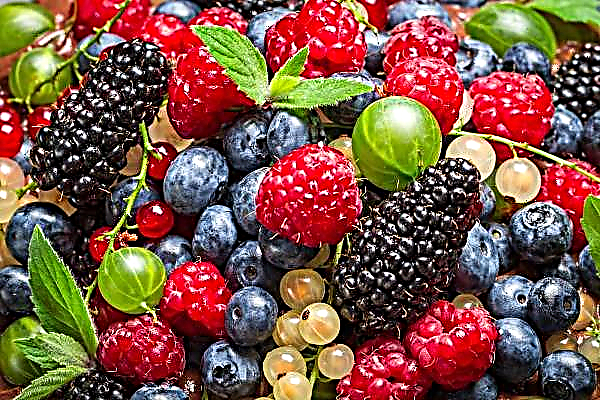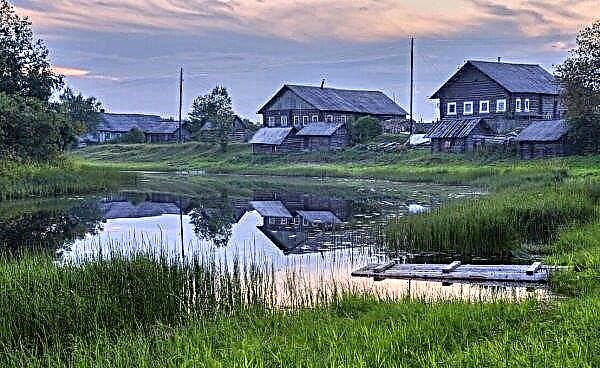Often, gardeners stop on the seedling method of growing zucchini. This allows you to get early production, which is very important in the northern regions, where the summer is short. The cultivation of this vegetable crop from seedlings has its own characteristics.
Choosing the most suitable variety for planting
Before you grow zucchini, you need to decide on the variety.
In this case, a number of varietal features should be taken into account:
- ripening dates (early, medium, late);
- productivity;
- exactingness to growing conditions;
- pollination (cross or parthenocarpy);
- type of growth (bush or climbing plant);
- taste, appearance.
Did you know? Zucchini is a type of pumpkin and was introduced to Europe by the Spaniards in the 16th century from America. Initially, they were grown as exotic plants with unusual flowers.
It is best to opt for zoned varieties. In the northern regions, early-ripening varieties with resistance to low temperatures (Rolik, Beloplodny, Pharaoh) should be preferred.
For greenhouses, seed material that does not need pollination is well suited - Belogor, Partenon, Aeronaut, Astoria, Apollon, Suha, Bely, Black Zucchini, Cavili. These are parthenocarpic hybrids, the fruits of which do not form complete seeds.
On the balconies and loggias it is permissible to grow early bush varieties that are resistant to adverse environmental factors. This is Belodonny, Anchor, Roller, Belogor.
In the southern regions you can grow exotic varieties with a long growing season. For example, a variety of Spaghetti, in which the ripened pulp breaks down into fibers or Lagenaria. You can choose the late zucchini, which are well kept.
When do you need to plant zucchini for seedlings?
When planting zucchini, one must take into account that they are planted on beds at the age of 25-30 days. "Overexposure" seedlings should not be - this will negatively affect fruiting. In central Russia, zucchini for seedlings is planted from the 20th of April to May 15.
For late harvests - from mid to late July. Such periods are preferable for obtaining fruits that are supposed to be left for storage or preservation. You can do repeated crops. They are conveniently produced after early potatoes, radishes, lettuce and cabbage.
In the southern regions, it is possible to sow in the spring earlier. Before landing, you should familiarize yourself with the weather forecast. In any case, when sowing, it should be noted that on the day of planting on the street, the day temperature should be set at + 23 ° C, and the night temperature + 19 ° C. Seedlings are planted in protected ground 2-3 weeks earlier.
How to prepare the seeds for planting?
If the purchased seeds did not undergo processing, then they should be decontaminated with a 1% solution of potassium permanganate for 20 minutes. Then they should be washed and dried on a napkin.

Such seeds are already suitable for sowing, but their germination can be improved by the following procedures:
- Soaking seeds in nutrient fluids or stimulants. For this purpose, use a solution of "Epina", "Zircon", ash, sap, aloe or complex fertilizers ("Nitroammofoski"). Seeds are immersed for 8-24 hours, and then they are not washed.
- Bubbling. Suitable for owners of aquariums. Seeds are placed in water enriched with oxygen by an aquarium compressor for 15–18 min.
- Hardening. For three days, the seeds wrapped in a cloth moistened with water are placed for 16 hours in the refrigerator, and the rest of the time (8 hours) is kept in a warm room.
- Soaking in warm water for a day, at a temperature of + 25 ° C.
- Germination. Seeds are kept in a damp rag warm until sprouts appear.
Did you know? Regular consumption of zucchini in food inhibits the appearance of gray hair. This is due to the antioxidants they contain. To maximize the preservation of beneficial properties, this vegetable should be cooked in the microwave.
Land preparation for landing
The soil for growing seedlings can be purchased at the garden store, or you can prepare yourself. The following composition is suitable - 6 parts of peat, 2 parts of humus, 2 parts of turf and 1 part of overripe sawdust (wood). Home-made soil can be disinfected by baking it in an oven, after which the soil mixture is enriched with nutrients - for 10 l of the mixture, take 5 g of ammonium nitrate, 10 g of superphosphate and 7-10 g of potassium sulfate.
Home-made soil can be disinfected by baking it in an oven, after which the soil mixture is enriched with nutrients - for 10 l of the mixture, take 5 g of ammonium nitrate, 10 g of superphosphate and 7-10 g of potassium sulfate.
Technology planting zucchini on seedlings
It is necessary to plant seed material, observing the following technology:
- The tank is filled with prepared soil mixture and irrigated with warm water.
- Seeds are deepened into the soil by 2-3 cm. 2 seeds are placed in each container, and a weak sprout is then removed. If germinated seeds are planted, then only one thing and the shoot down.
- Moisturize the landing again.
- Then the landing packaging is placed in a place where the temperature is + 18 ... + 22 ° C.
Did you know? In a zucchini there are few calories - 16-24 kcal / 100 g. Moreover, its consumption practically never causes allergic manifestations. This allows you to use the vegetable in diet and baby food.
Sprouts appear in a week, after which the containers are transferred to a well-lit place with a temperature of + 16 ... + 18 ° C. After 3-4 days, the temperature regime is changed to + 20 ... + 28 ° C during the day and about + 18 ° C at night. If necessary, you need to take care of additional lighting.

Features seedlings care
Zucchini seedlings should be properly looked after.
Watering and feeding
Humidification is done as the soil dries up, using standing water at room temperature. Do not allow the drying of an earthen coma or too “flood” the plants. As for feeding vegetable crops, the first fertilizer application is carried out 7-10 days after emergence.
For this purpose, use:
- a solution of manure or chicken droppings, at the rate of 1 to 10. For 1 instance - 50 ml of fertilizing;
- urea, in a concentration of 1 tbsp. liters per 2 liters of water. 220 ml is enough for watering one plant;
- chemical preparation "Bud" (3 g per 1.5 l of liquid). On one sprout - 1/2 cup.

10 days after the first feeding, repeated fertilizer is done. To do this, take 10 l of manure solution and put in it 20 g of superphosphate, 10 g of ammonium nitrate and 15 g of potassium sulfate. You can use a different composition - 3 tsp. Nitrophoski to 3 l. Of water.
220–250 ml per 1 copy is enough for feeding. It is preferable to use ready-made complex fertilizers - Agricola, Mortar, FlorGumat, Hera. After 25-30 days, when 2-3 true leaves appear, seedlings are ready for planting. Before planting on the beds, plants should be hardened, taking out boxes with seedlings on a balcony or an open terrace.
How to transplant seedlings in open ground?
To plant zucchini, you should choose a suitable plot of land and prepare it, and then, plant young plants according to the recommended schemes.
Important! Zucchini grow poorly on wet, peat and clay soils. Do not plant this plant crop next to pumpkins, as pollinating will worsen the yields of both vegetables.
Choosing a place to land
For squash seedlings, choose a place that is well lit by sunlight and protected from gusts of wind. A plot where planting greens, legumes, potatoes, cabbage, onions or garlic grew last season is suitable for planting. Do not plant seedlings in the area where cucumbers, squash, pumpkins previously grew. A vegetable crop is planted on the same plot only after 3-4 years. Zucchini loves light loamy soil and black earth. It is necessary to exclude areas where groundwater comes too close to the surface of the ridge.
Do not plant seedlings in the area where cucumbers, squash, pumpkins previously grew. A vegetable crop is planted on the same plot only after 3-4 years. Zucchini loves light loamy soil and black earth. It is necessary to exclude areas where groundwater comes too close to the surface of the ridge.
Soil preparation
Land "under the squash" is prepared in October-November. Digging is carried out with the addition (per 1 m²) of rotted manure or humus - one bucket, 30 g of superphosphate and 20 g of potassium salt. The acidity rate of the soil for zucchini is in the range of 5.5–6.5 pH. Acidic soils must be liming.
In spring, the prepared area is well enough to loosen. If nutrients were not added in the fall, this process is carried out in the spring. This requires 15 kg of compost, 50 g of superphosphate and some wood ash per square meter. If the soil is sandy, then fertilizing with a magnesium content should be carried out.

Planting seedlings
Zucchini grows large enough, therefore, it is recommended to maintain a gap of 1–1.5 m between rows and 0.7–1 m between holes. Bush-type plants can be planted according to the pattern: 0.7 × 0.7 m.
Planting seedlings in the holes should be in the morning or in cloudy weather. The plant is sprinkled with soil to cotyledon leaves and well watered. The day after planting, it is advisable to loosen the soil around the plants. With the threat of night frosts, plants are covered with agrofibre at night.
Zucchini Care
After transplanting seedlings to a permanent place, you should, first of all, take care of watering. Hydration is carried out 1 time in 10 days. On average, 10 liters of water are consumed per square meter of landings. The irrigation fluid should be at about room temperature. The watering regime is largely dependent on weather conditions. In hot and dry weather, they are watered every 2-3 days, and during the rainy season they do not moisturize.
Important! Watering should be carried out at the root, since drops of moisture on the leaves can cause burns to the leaf plate.
After wetting, loosen the soil and remove the weed. Twice a season, after watering, zucchini should be fed - during the flowering and fruit formation. Organic fertilizers are suitable for feeding - infusion of manure or chicken droppings.
You can use complex fertilizers, such as Azofoska, Nitrofoska or Karbomid. For fertilizing, you can buy ready-made complex fertilizers in any garden store. Most varieties need pollination.

To attract insects, you can spend in the morning spraying with water with the addition of honey. During rains, when there are no insects, pollination is carried out manually. To do this, cut the male flower and pollinate the female buds.
Zucchini can be affected by diseases such as white and gray rot, powdery mildew, fusarium wilt. To combat diseases, treatment should be carried out with Bordeaux liquid or copper sulphate, thin out plantings and prevent stagnation of water on the site, observe crop rotation.
From such insects as aphids, spider mites, whiteflies, insecticidal preparations such as "Commander" are used. Spraying with infusion of garlic, onions and soap-tobacco solution helps well.
Harvesting and storage
It is necessary to collect zucchini depending on the variety and planting time. For longer storage, choose the type of this vegetable, which ripens later. It is necessary to pick fruits as they ripen. As a rule, they are already ready for collection 3-4 weeks after flowering.
You can tear off this vegetable for storage when the peel is hard to touch, and if you lightly tap it, a muffled sound is heard. In a cool basement or cellar, fruits can be stored for up to 5 months. Young zucchini tastier, but not stored for a long time. Milk ripeness fruits are stored in the vegetable section of the refrigerator at a temperature of about + 2 ° C for no more than 14 days. Then they begin to deteriorate.Important! It must be ensured that the fruits do not outgrow. To do this, they are collected every 2-3 days.

Zucchini for longer storage must be sorted out, discarding damaged specimens. Then, the selected vegetables are placed in boxes and covered with straw or sawdust so that they do not touch each other. Fruits can be suspended in nets, individually.
Zucchini can be frozen. In this case, they can be stored until a new crop. This vegetable is great for processing. It makes an excellent, well-known, squash caviar, they can be pickled, salted, as well as boiled jam or candied fruit.
When growing zucchini in a seedling method, you need to choose the most suitable variety for this, organize everything you need for planting and plant the seeds in separate containers. After transplanting seedlings in open ground, proper care should be provided to the vegetable crop.

